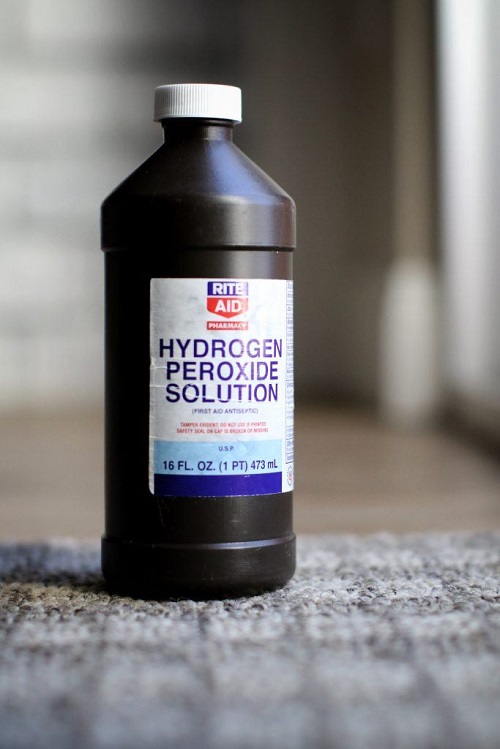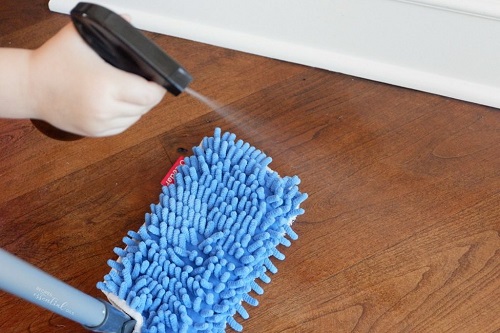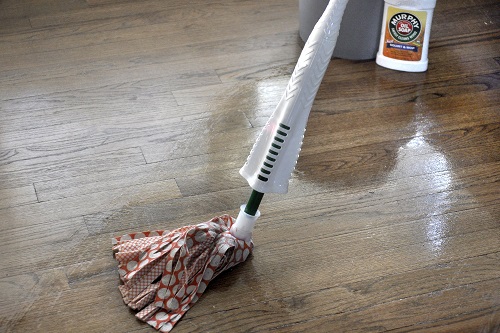If you are wondering whether can you use hydrogen peroxide on wood floors, then keep reading this article to find out more on the topic!
Wooden floors give an earthy and versatile appearance to residential dwellings, thereby increases their aesthetic importance. To keep the floors in top-notch condition, periodic or spot cleaning is a must. Wood floorings are durable, but their finishes can be damaged easily due to a wrong cleaning solvent. As hydrogen peroxide is a popular multi-surface cleaner and disinfectant, people see it as an ideal cleaning agent for solid and engineered wood floors. However, before using peroxide for such a purpose, read this article until the end to find out whether you can use hydrogen peroxide on the wood floors.
What Is Hydrogen Peroxide?

Hydrogen peroxide is a neutral liquid with a slightly sharp odour. It’s available at different concentrations ranging from 3%, 6-10%, and 90%. Hydrogen peroxide is a popular disinfectant because of its ability to eliminate various yeast, fungi, mold spores, and bacteria. However, exposure to higher concentrations of this product can lead to severe complications.
Can You Use Hydrogen Peroxide on Wood Floors?

Hydrogen peroxide is a safe product to use on both solid and engineered wooden floors. However, avoid using it on dark-coloured floors as it can bleach the wooden surface to 1-2 shades lighter. You can use hydrogen peroxide to clean dirt, grime, and the most stubborn stains. Furthermore, it’s a stable and powerful disinfectant that kills harmful microorganisms present on all kinds of inanimate surfaces, including wooden surfaces. For spot cleaning, try the below quick hack.
What You’ll Need
- 3% Hydrogen Peroxide
- Empty Spray Bottle
- A Non-abrasive Cloth
- Soft-Bristled Brush
Directions
- Fill an empty spray bottle with 3% hydrogen peroxide.
- Next, spritz the solution on the desired portion of the wood floor.
- Wait for a few seconds, and scrub with a soft-bristled brush if required.
- After that, wipe the surface with a non-abrasive cloth.
- Repeat this process if needed.
Notes
- To disinfect the wooden flooring, combine equal amounts of hydrogen peroxide and tepid water into a bucket. Next, mop the desired floor as usual and dry it properly.
- For stubborn stains, place a hydrogen peroxide-soaked rag on the problematic spot. Leave for 10-15 minutes. Once it’s done, wipe the floor with a cloth and let it dry.
Precautions to Consider
Before using hydrogen peroxide, make sure to follow the below precautions.
- As hydrogen peroxide has bleaching qualities, test the solution on an inconspicuous part of the wooden floor.
- Wear hand gloves, full-sleeved clothing, a goggle, and a breathable face mask.
- Keep the bottle of hydrogen peroxide out of the reach of children and pets.
- Never combine hydrogen peroxide and vinegar as they generate peracetic acid that affects the human body negatively.
Other Methods to Clean Wooden Floors
As you know, hydrogen peroxide is not suitable for dark-hued wooden floors, that’s why we compiled a few other methods for you to try.
- Murphy’s Oil Soap – Specially formulated to clean wooden stuff, murphy oil soap brings back the former glory of your dingy wooden floorings in no time. Read details here.
- Castile Soap Cleaning Solution – Make your own wood cleaning solution by combining a tsp of liquid castile soap and four cups of slightly warm water into a spray bottle and shake a bit. Spritz the sudsy solution over the wood floor, mop the surface as usual, and let it dry.
Other Uses of Hydrogen Peroxide
Besides cleaning and disinfecting hardwood floors, the versatile hydrogen peroxide has lots of household and gardening uses as well.
- Helps to grow mushrooms
- Eliminates obnoxious skunk odour
- Kill spider mites
- Refinish metal stuff
- Cleans burnt pot, dirty grout, toilet, garbage can, and mirror
- Disinfects kitchen surfaces
- Sprout healthy seeds
- Remove algae from pond water
- Eliminates plant fungus and pests
Conclusion
After reading this article, you’ll definitely include the non-toxic hydrogen peroxide in your cleaning arsenal. When used with caution, it’s a wonderful product for wood flooring. If you found this article helpful, share it with your family and loved ones.
